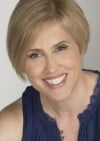book 20 of 24 books in 28 days: tell it slant
Tell it Slant: Writing and Shaping Creative Nonfiction, by Brenda Miller and Suzanne Paola, is the kind of book one might buy, as I did, at the beginning of a nonfiction project. It is a guidebook to the variety of material that falls under the heading “creative nonfiction” and a collection of questions and writing prompts. But I am thinking as I read it now that it’s valuable, too, as a source for fleshing out later drafts.
It also covers some of the genre-defining ground that Lopate covers in his introduction and Hampl covers in her book, so I won’t revisit that here.
One of the best things about the book (for the purpose of my thinking today and this blog) is its chapter-heading quotes from nonfiction writers. I can’t resist copying a few of them.
The best work speaks intimately to you even though it has been consciously made to speak intimately to thousands of others. The bad writer believes that sincerity of feeling will be enough, and pins her faith on the power of experience. The true writer knows that feeling must give way to form. It is through the form, not in spite of, or accidental to it, that the most powerful emotions are let loose over the greatest number of people.–Jeanette Winterson
I go out of my way, but rather by license than carelessness. My ideas follow one another, but sometimes it is from a distance, and look at each other, but with a sidelong glance . . . I love the poetic gait, by leaps and gambols.–Michel de Montaigne
Facts in all their glorious complexity make possible creativity. The best nonfiction writers are first-rate reporters, reliable eyewitnesses focused on the world, not themselves, and relentless researchers with the imagination to understand the implications of their discoveries.–Philip Gerard
I was delighted to find that nonfiction prose can also carry meaning in its structures and, like poetry, can tolerate all sorts of figurative language, as well as alliteration and even rhyme. The range of rhythms in prose is larger and grander than it is in poetry, and it can handle discursive ideas and plain information as well as character and story. It can do everything. I felt as though I had switched form a single reed instrument to a full orchestra.–Annie Dillard
These books, these quotations, these writers: I am inspired to get back to my revisions. I hope that if you’re reading this, you are, too.





Comments are closed